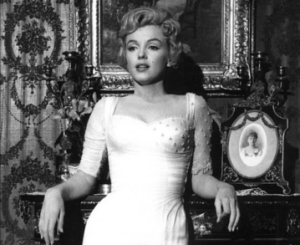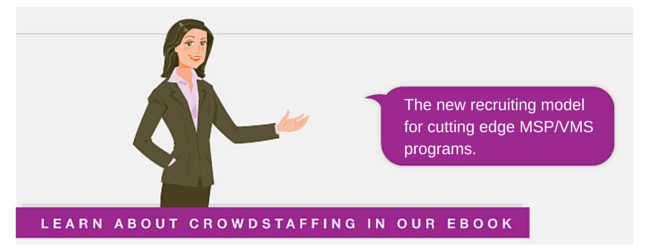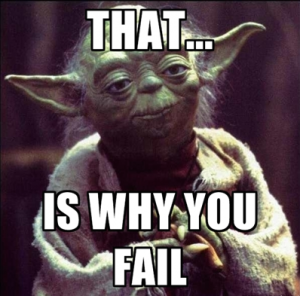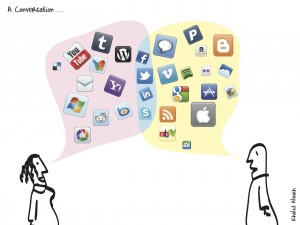 Marilyn Monroe: a legacy that can teach us a lot about diversity and cultural fit
Marilyn Monroe: a legacy that can teach us a lot about diversity and cultural fit
Diversity persists as one of the hottest topics at the forefront of the national conversation. In the workplace, however, the largest diversity gap continues to be one of the oldest: equal treatment for professional women. Industry and mainstream media often discuss the problem, assert that it needs to be solved and even suggest approaches for redressing it. Yet, we seldom seem to concentrate on the cause and effects — just that the issue exists and probably isn’t good for business.
Scratching the surface of things generally leads to the application of a Band-Aid. Curing a disease requires treating the cause, not just identifying its symptoms. Although it’s difficult to determine the precise catalyst, countless studies demonstrate that diversity and cultural fit — two leading workforce topics — are inextricably bound. So delving into the problems of diversity means acknowledging and attacking the dark side of culture.
And a sharp example of how culture affects diversity is Marilyn Monroe, who would have turned 89 on June 1. She was one of the most famous yet misunderstood icons of our time, and her legacy can teach us an awful lot about this subject.
The intelligent, complex woman most people never saw
Marilyn Monroe left this world 53 years ago. Here enduring impression, however, remains. In fact, it seems to grow with each passing year. When people remember the ill-fated star, they recall a sex symbol, a casualty of stardom, a mistress to powerful men and a tragic end. As journalist Jill Layton points out, writing for Hello Giggles, a popular website that promotes a positive community for women, “There was so much more to Marilyn than what she represented. She was a driven career woman with a passion for literature, who grappled with her own insecurities and overcame major hurdles at a time when sexism in Hollywood was at its height.”
- Monroe was a published poet, modern art lover and avid reader of complex literature. She had a library of over 400 books. She once met Nikita Khrushchev, and the two struck up a deep discussion of Dostoyevsky’s “The Brothers Karamazov.” Russian literature, as any English major will tell you, is not a light read.
- She was a shrewd entrepreneur and business leader. Monroe became the second woman in U.S. history to own her own production company. “She broke the mold and challenged the authoritarian structure of Hollywood studios, which dictated what films their stars would make,” Layton writes.
- She was an outspoken advocate for equality and talent. In 1955, Ella Fitzgerald was banned from performing in clubs because of racial segregation. Recognizing her talent and the destructive effects of legally sanctioned discrimination, Monroe promised to personally attend shows and sit in the front row of the club if management agreed to let Fitzgerald play. Today, we remember Fitzgerald as The First Lady of Song.
- She was an accomplished chef. As Layton reveals in her article, “Her bouillabaisse was famous among her friends. A group of writers at The New York Times tried making her recipe for stuffing, but it took them two hours to finish because it was so complex.”
- The original “Material Girl” was nothing of the sort. Diamonds weren’t her best friend. Marilyn Monroe collected books, and considered them her prized possessions.
Yet despite all nuanced characteristics and keen intelligence that defined Norma Jeane Mortenson, the introduction in her Wikipedia page illustrates precisely how people perceived her: Marilyn Monroe, brainless, voluptuous object of affection.
- “An American actress, model and singer, who became a major sex symbol.”
- Films that featured her “dwelt on her seductiveness.”
- “Her ‘dumb blonde’ persona was used to comic effect.”
Monroe’s dilemma continues to illustrate the struggles modern women face in the workforce: when given an equal opportunity, they shine. However, cultural obstacles linger, which limit exposure to those opportunities. And in their efforts to acculturate and thrive, too many women find themselves conforming to imposed images and attitudes — being typecast to what seems most acceptable in the business environment.
Uneven business cultures drain women of ambition after two years
Bain & Company recently conducted a study that discovered women at a job two years or less outpaced men in terms of ambition. Yet after two years, aspiration plummeted 60 percent and confidence dropped 50 percent. “These declines came independent of marriage and motherhood status, and compared with much smaller changes for men, who experienced only a 10% dip in confidence,” the report noted. Why? Uneven business cultures.
Consider another revealing study from the Journal of Economics and Management Strategy (JEMS), in which professors from MIT and George Washington University analyzed eight years of revenue data and survey results about gender diversity around the world. In the gender diverse environments, employees’ ratings of office satisfaction, cooperation and morale were startlingly lower.
The biggest irony, as DCR Workforce observes, is that these employees expressed a desire to work for a company that cared about equality between the sexes — “as long as that caring didn’t translate into action. This raises an interesting question: How does one create a gender-diverse work environment that keeps all workers engaged, particularly when research indicated that diversity is a stronger driver of financial success than engagement?”
What should we be talking about when we describe “business culture?”
According to recent research, more than 80 percent of organizations around the globe cited cultural fit as a primary employment priority. The concept of cultural fit, first championed in the 1980s, involves the Big Data and predictive analytics that have become so touted today. Ideally, using data and human interaction, enterprise hiring and retention initiatives can be strengthened when workers are chosen because their skills, experience, personality and values mesh well with the organization’s strategy. When performed properly, employees feel a greater sense of attachment to their roles and teams, produce more and remain with companies longer. However, as Lauren Rivera observes in the New York Times, “Cultural fit has morphed into a far more nebulous and potentially dangerous concept. It has shifted from systematic analysis of who will thrive in a given workplace to snap judgments by managers about who they’d rather hang out with.”
Although diversity stands as a significant driver of progress — and has increased — the momentum has been slower than expected. Google’s latest internal diversity report exemplifies this. Although improvements have taken place, the number of women professionals at the tech giant remains quite low. And when hiring selections are made on personal fits, rather than cultural fits, they stifle demographic, gender and cultural diversity.
In her analysis of companies across markets, Rivera saw that “bonding over rowing college crew, getting certified in scuba, sipping single-malt Scotches in the Highlands or dining at Michelin-starred restaurants was evidence of fit; sharing a love of teamwork or a passion for pleasing clients was not.”
These are perilous waters to tread, especially when all reliable data point to optimal output and profitability when business environments are truly diverse. Beyond that, studies demonstrate that robust business cultures are tied to soaring profits. A new Gallup study shows that when the workforce is both diverse and engaged, businesses can see a 46-percent increase in revenue, along with a 58-percent higher level of profit. For jobs involving complex decisions and creativity, diverse teams outperform less diverse ones. And business cultures need to reflect those strategies instead of emphasizing similar biographies, backgrounds, personal beliefs and genders between managers and talent.
MSPs have unique opportunities to help businesses succeed
Diversity has long been a hallmark of MSPs and their staffing partners. As the doors to global communities open, witnessing unprecedented levels of mobility and integration, more employers are reaching out to MSPs to help them find the diverse talent they need now. Yet where MSPs can exert incredible influence is in helping business leaders redefine an invigorating, high-performing and lucrative talent culture that welcomes and capitalizes on the strengths of diversity.
In past articles, we’ve discussed the transition of MSPs to their competitive, strategy focused 2.0 state. However, with the steady expansion of the blended workforce — which now includes permanent employees, contingent talent, freelancers and contractors — the role of the MSP is poised to evolve again.
Companies want the benefits of an on-demand, complementary talent team, yet managers are struggling to handle the volume and variety. MSPs hold greater sway in shouldering these responsibilities, and could soon become pure Business Process Outsourcing (BPO) juggernauts. As larger numbers of their contingent talent infuse their clients’ existing groups, MSPs become instrumental in establishing and guiding business cultures. This is precisely where clients could achieve the results they desperately seek.
- MSPs are proven to make diversity a visible and strategic priority. They set inclusiveness goals, and hold managers accountable for diversity.
- During implementation, MSPs establish executive sponsorship with their clients’ corporate leaders, allowing them to create inclusion advocates across all classes, reinforce diversity commitments, measure progress toward goals and establish formal review processes for identifying challenges.
- MSPs develop, as part of their Standard Operating Procedures (SOPs), merit-based hiring strategies that emphasize ideal cultural fits — not friendship fits — that align to the organization’s overarching strategies and objectives. These strategies focus on filling key positions with the best people across diversity groups, eliminating perceptions that people are placed to fill quotas.
- They have teams of data analysts who review employment data from their internal systems, the client’s human resource platform, and business intelligence across other clients. These predictive analytics enable them to identify talent trends, traits, skills, values and goals to optimize the recruiting process. They can also uncover divisions with the poorest track records in diverse hiring and engagement.
By evaluating the root causes of the problem, not just apparent symptoms, MSPs launch programs that emphasize a combined increase in diversity, performance and profit. And as the modern labor force becomes more integrated, elastic and blended, the importance and reliance on MSPs for more than just temporary talent could be the next stage in building a better business culture — one that embraces the diverse values and contributions that define this young century.
(256)








